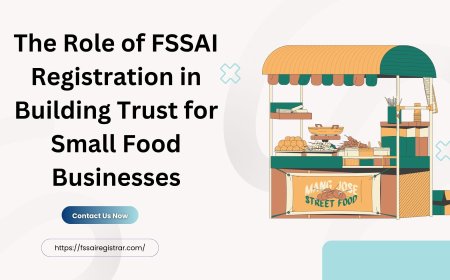2025 Food & Beverage Trends: Health Drinks, AI Menus & Local Sourcing
From AI-powered menus to functional beverages and locally sourced ingredients, see how the food and beverage industry is transforming in 2025.
Food and beverage trends in 2025 are more dynamic than ever, influenced by health awareness, technology, and sustainability. Consumers are exploring new dietary routines and increasingly opting for transparency in sourcing. While health drinks and plant-based options continue to dominate, AI is also transforming the way we order food. As with lifestyle shifts in other industries, even the use of vape devices often mirrors the consumer preference for convenient, single-use choices that offer variety.

Health Drinks Go Mainstream
Consumers are prioritizing drinks that offer functionality, not just flavor. From immune support to hydration and gut health, beverages in 2025 are designed to serve specific wellness goals.
Key Trends in Health Beverages:
-
Fermented drinks like kombucha and kefir are widely available in mainstream retail.
-
Adaptogenic drinks made with herbs such as ashwagandha and reishi mushroom help people manage stress and mental clarity.
-
Protein-infused water and plant-based energy drinks are gaining popularity among fitness enthusiasts.
-
Probiotic sodas now replace sugary colas on many shelves.
-
Coconut water and aloe-based drinks are consumed more for natural electrolyte balance.
-
Herbal teas continue to expand with functional blends targeting sleep, digestion, and relaxation.
Beverage companies are investing in R&D to create clean-label products with added benefits. Whether it's a turmeric shot or a green juice blend, convenience and nutritional value are central to the demand.
AI-Driven Menus and Personalized Eating
Artificial Intelligence is now a key player in restaurants and food tech services. From ordering systems to kitchen operations, AI contributes to better efficiency and customization.
Heres how AI is changing menus:
-
Dynamic pricing and personalized suggestions based on time of day, customer history, and preferences.
-
Smart kiosks in restaurants recognize returning customers and recommend meals suited to dietary needs.
-
Recipe generation using AI considers ingredient availability and popular trends.
-
Calorie and allergen tracking integrated into restaurant apps helps users make better choices.
-
Voice-activated ordering improves speed and accessibility, especially in quick-service formats.
Tech companies and restaurants are working together to design AI systems that improve both customer experience and operational speed. The result is a food experience that feels tailored without requiring extra effort from diners.
Rise in Local Sourcing and Micro Supply Chains
The shift towards local sourcing continues to gain momentum in 2025. Consumers want to know where their food comes from and how it's produced. This has led to a noticeable boom in local farms, urban gardens, and food hubs.
Benefits of Local Sourcing:
-
Freshness and seasonality improve product quality and flavor.
-
Support for local farmers contributes to economic resilience.
-
Shorter supply chains reduce carbon emissions.
-
Higher transparency around food production and processing.
Restaurants, cafes, and beverage brands now proudly list sourcing details, often featuring rotating menus that reflect whats available locally. Food miles are being replaced by food blocks a trend where sourcing happens within a few city blocks whenever possible.
Plant-Based and Alternative Protein Innovations
Plant-based eating has moved beyond meat substitutes. In 2025, innovation is happening in every corner of food science, making plant-based choices the default for many.
New Developments in the Plant-Based Space:
-
Mushroom-based meat alternatives that replicate texture and umami taste.
-
Lab-grown seafood reducing pressure on wild stocks.
-
Lentil, chickpea, and pea protein snacks in expanded formats.
-
Dairy-free cheeses made with cashews, oats, or almond bases that now melt and stretch like real cheese.
-
Egg replacements for baking that are shelf-stable and protein-rich.
-
Algae and insect proteins used in sports drinks and high-protein snacks.
Whether it's a vegan cheese pizza or a protein shake made from microalgae, consumers are open to trying new options when sustainability and nutrition are part of the offer.
Beverage Packaging: Sustainability & Smart Features
Sustainability in food and beverage packaging has evolved into smart packaging in 2025. The focus is now on reducing waste, tracking freshness, and enabling traceability through digital tags.
Popular Packaging Innovations:
-
Compostable bottles and straws made from cornstarch or seaweed.
-
Smart labels that change color based on product freshness.
-
QR codes on food items linking to sourcing, nutritional facts, and allergy alerts.
-
Reusable container systems supported by loyalty programs and return stations.
-
Minimalist design that reduces the use of ink and plastic layers.
-
Returnable glass bottles reintroduced by local dairies and beverage startups.
These packaging innovations not only help the environment but also increase consumer trust by offering more data and control over their purchases.
Food Service Models Adapt for Flexibility
In 2025, dining is more about flexibility than formality. From ghost kitchens to modular cafes, the structure of food service has shifted to meet varied lifestyles.
Emerging Models in Food Service:
-
Ghost kitchens supporting multiple brands from a single prep hub.
-
Subscription-based meal services offering weekly custom menu delivery.
-
Food trucks and pop-ups that use digital tools for pre-order and pick-up.
-
Hybrid dining areas combining coffee shop, workspace, and wellness cafe.
-
Zero-contact delivery with robotics and temperature-controlled lockers.
-
BYOD (Bring Your Own Dish) models at local co-ops to reduce waste.
The industry is experimenting with models that merge technology, sustainability, and consumer convenience in ways that match todays fast-evolving habits.
Summary: What's Next for Food & Beverage in 2025
The trends in 2025 show how integrated food, health, and technology have become. The demand for cleaner drinks, personalized menus, and traceable ingredients defines how brands and businesses are responding. Consumers are smarter and more curious about what goes into their meals and the food world is meeting them where they are.
Its not just about what we eat, but how we choose it, where it comes from, and how it supports our overall well-being. Much like how users lean toward simplified, convenient throwaway vape options in other areas of life, the food and beverage industry is adapting with solutions that are accessible, sustainable, and designed to fit real daily needs.
































